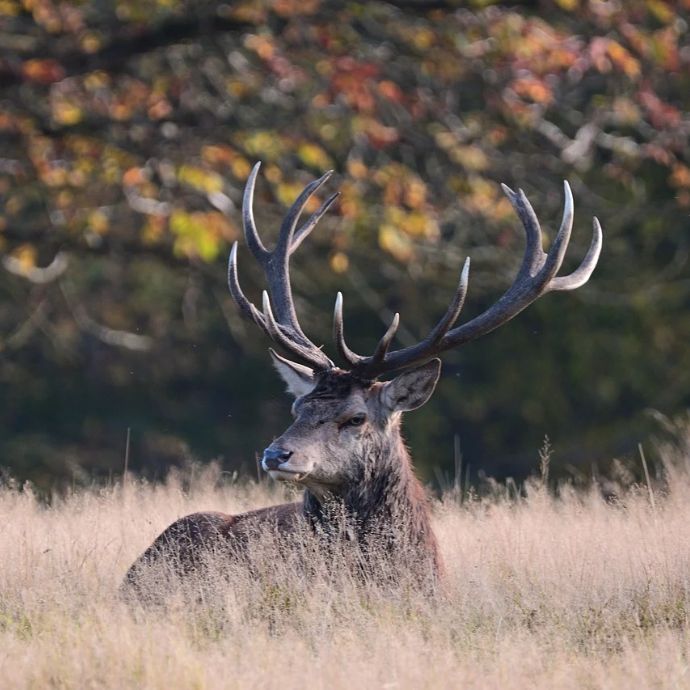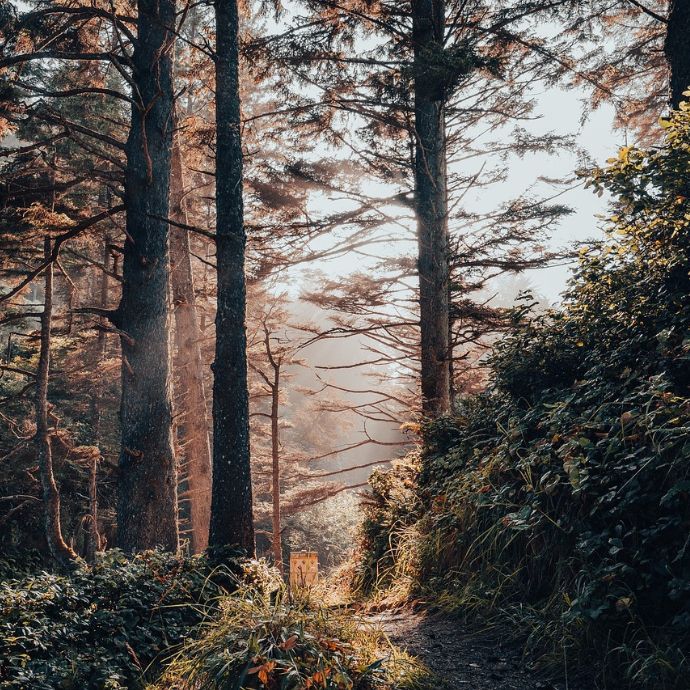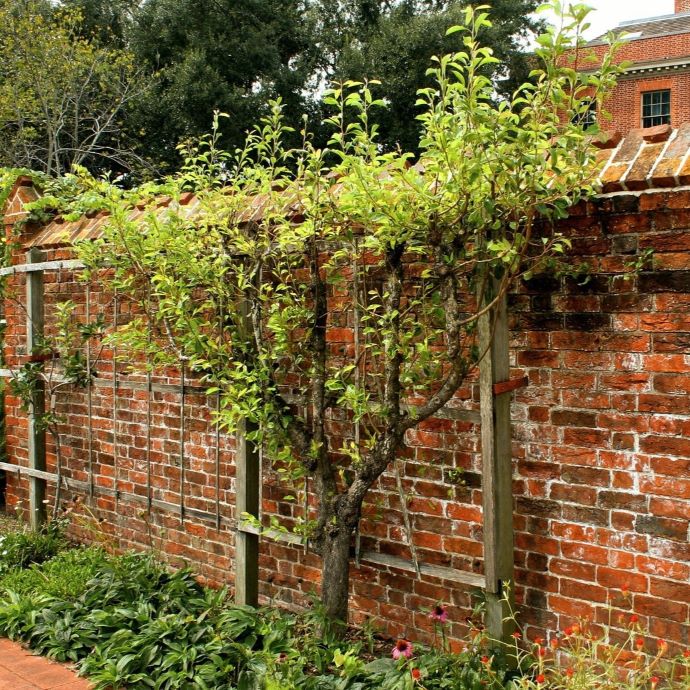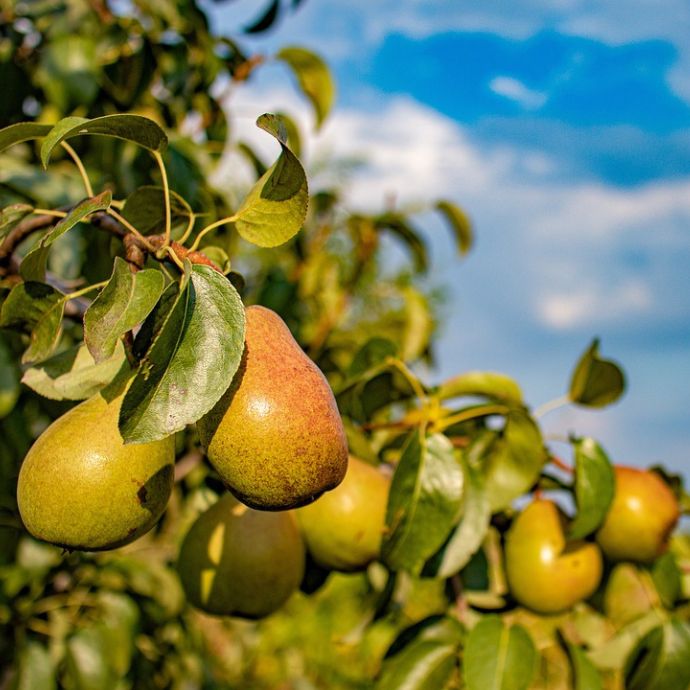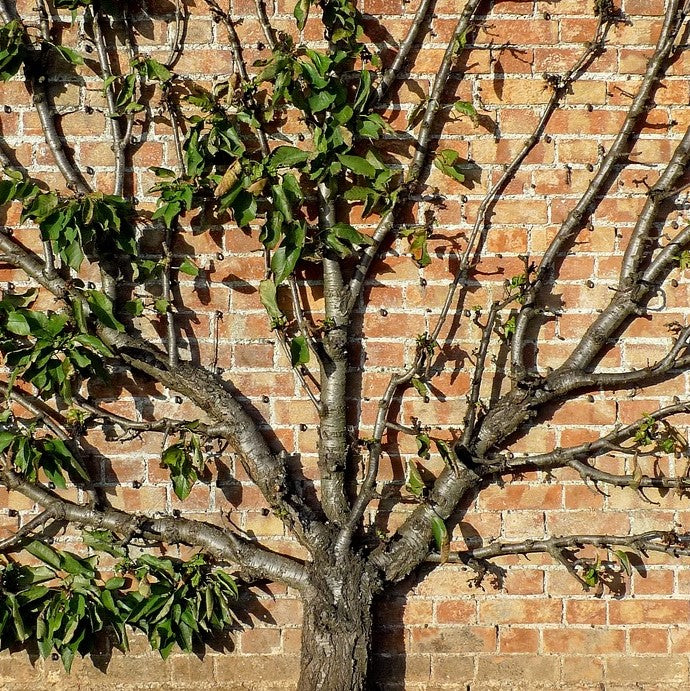Growing Herbs: A Beginner’s Guide
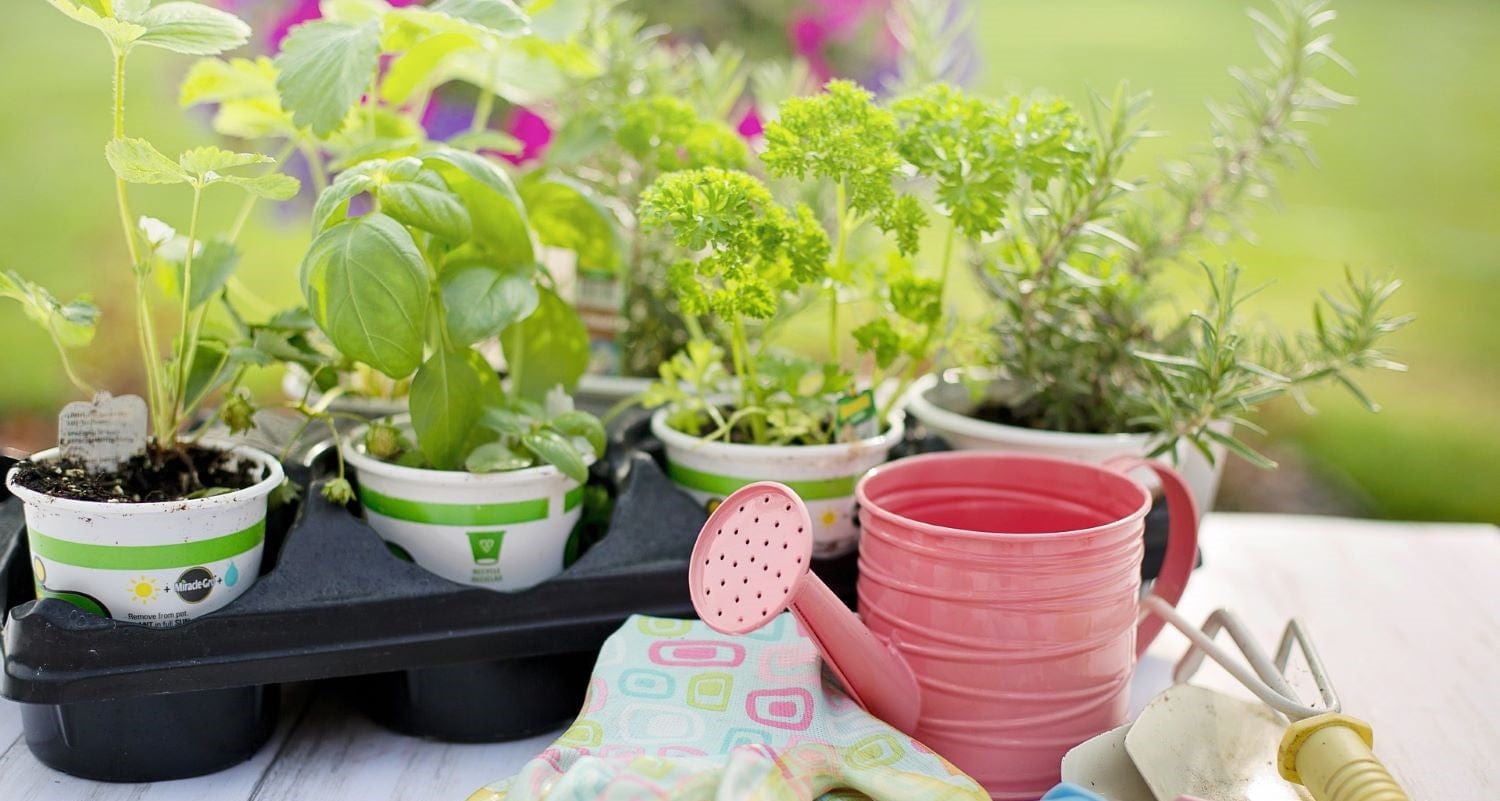
Starting a herb garden is an easy way to add flavour and freshness to your cooking as well as colour and fragrance to your garden. Add to this their attractiveness to pollinators and you can see why growing herbs is an easy win. Read on for our growers’ tips and you’ll have a thriving herb garden before you know it!
Jump to:
- Growing herbs from seed
- Growing herbs from plants
- Easiest herbs to grow
- Growing outdoors
- Growing indoors
- Growing in pots
- Companion plants
- Plant care
- Container combinations
- Harvesting and storing
- Taking cuttings
- Problem solving
How to grow herbs from seed
You can sow herb seeds indoors all year round, provided they have plenty of warmth and light. If you’re planning to plant them outside, sowing from January to April is best, as they’ll be a good size by the time the last frosts have passed. From March onwards, you can sow seeds directly into the soil outdoors if it’s warm enough, but be sure to protect young plants with cloches, fleece or cold frames until the weather warms up, and be vigilant with your pest control (see below).
How to grow herbs from plants
It’s easier and usually more successful to grow your herbs from plants. When your herb plants arrive, repot them if they look like they need it, then keep them on a warm windowsill until their roots have filled the pot. You can either keep your herbs indoors or plant them outside when the last frosts have passed in late spring or early summer.

The easiest herbs to grow
This varies from garden to garden, depending on your soil and light conditions, but generally speaking, perennial herbs are the easiest to grow as you can leave them in the garden to do their thing for most of the year. Experiment with your favourites and you’ll soon discover which herbs are best for your particular patch. There are three main kinds of herbs - annual, biennial and perennial - which all need different growing conditions. If you have a particular favourite, check out the growing information on each of our herb plant pages to make sure they’re right for your garden.
Annual herbs
Annual herbs like basil, coriander and dill are tender annuals which will usually need to be regrown each year. These need a lot of warmth and are often best grown on a windowsill or patio. Plant lots of them to be sure of a constant supply!
Biennial herbs
Biennials have a two year life cycle, producing foliage in the first year and flowers and seeds in the second - these include chervil and parsley. To make sure you always have fresh supplies, plant some every year, then you’ll always have a plant in each stage of its life and plenty of seeds to make more.
Perennial herbs
Many popular herbs are perennials; these include chives, fennel, mint, sage, tarragon and thyme. They will keep growing year after year and are pretty low maintenance. If your soil isn’t the best, these are the herbs you need. Sure, they tend to be a bit on the vigorous side so there’s a lot of pruning to be done once they’re established, but when you can eat the cuttings, who’s complaining?
Growing herbs outdoors
Herb plants are easy to grow in borders, raised beds, containers or grow bags.
They’ll do best in well drained soil with a low nitrogen content, so if your soil is sand or clay, dig in plenty of compost. It’s also a good idea to grow your herbs within easy reach of the kitchen door to make them easier to harvest when you need them - a patio is perfect. Vigorous herbs like rosemary and mint are best planted in pots as they tend to take over your borders!
A south or west facing balcony is another ideal place for a herb garden - the more sheltered the better. You can use pots of different sizes, window boxes and hanging baskets to create an edible garden which will also give fragrance and visual appeal to your seating area.
Growing herbs indoors
Indoors, grow your herbs on the kitchen windowsill (or the sunniest windowsill you have) in rectangular planters or traditional terracotta pots. Grow the herbs you use the most and snip off a few fresh leaves whenever you need them. If you don’t have a warm, sunny place to grow them, you could try using a hydroponic planter, which uses water and UV light. It’s more expensive initially, but can be very effective, especially in winter.
How to grow herbs in pots
Herbs are perfect for growing in pots, especially compact, sun loving annuals like basil and coriander. Grow your herbs within easy reach of the kitchen door to make them easier to harvest when you need them. You can use pots of different sizes, window boxes and hanging baskets to create an edible garden which will also give fragrance and visual appeal to your seating area. Vigorous herbs like rosemary and mint are best planted in pots as they tend to take over borders!

Herbs as companion plants
As if herbs weren’t useful enough, you can also put them to work on your vegetable patch, where they’ll attract beneficial insects and keep away the pests. For example, planting sage will keep cabbage root fly at bay, garlic and chives help to deter aphids and fennel attracts ladybirds and hoverflies, who will help you out by eating sap-sucking bugs. Find out more about nature’s own pest control in our guide to companion planting.
Herb plant care
The best soil for herbs
Annual herbs grow best in moist, well-draining fertile soil with plenty of fresh compost mixed in, so if your garden soil is a bit on the clay-heavy side, growing in pots might be a better option.
How much sun do herbs need?
Most herbs, especially the annual and biennial varieties, need a spot in full sun - six to eight hours a day and plenty of shelter produces the best results. Don’t worry if your garden is a bit on the shady side though, as some varieties, including mint, dill, parsley, coriander, chervil and chives will tolerate a bit of light shade.
How to water herbs
Keep your herb plants well watered, especially in dry spells. Perennial herbs will be fine outdoors throughout autumn, winter and spring, but will need a bit of watering a couple of times a week in warm and sunny weather. Tender annual herbs and those in pots will need more than hardy herbs planted in the ground.
Do herb plants need feeding?
Your herb plants will benefit from a feed of general purpose fertiliser or liquid seaweed when you first plant them, but be careful not to use nitrogen rich fertilisers (this includes manure) as they may taint the flavour of the herbs.
Container herb garden combinations
Which combination of herbs you grow will depend largely on what you like to eat. If you cook a lot of Mediterranean food, choose combinations of basil, oregano, parsley and thyme. For South Asian cuisine, choose coriander, fennel and lemongrass. Every cuisine needs bay leaves, chives and parsley, so keep some handy in pots by the kitchen door. For making herbal teas, go for mint, chamomile or fennel.
Herbs also make a beautiful scented patio container - think lemon balm, borage and bergamot - and a flowering herb pot is great for attracting bees and butterflies to your patch.
For inspiration, watch Lydia make a windowsill herb garden with her favourite herb varieties.
Harvesting
Harvest your herbs by snipping off fresh leaves or stems on the day you need them.
Don’t worry about damaging your plants by picking too much - the opposite is generally true, and frequent picking will encourage the plant to produce more foliage.
Storing your herbs
The best way to keep your herbs fresh is by leaving them on the plant and only cutting what you need as close as possible to the time you need it. If this isn’t possible, they’ll keep in the fridge. Soft leafy herbs like basil, coriander, parsley and mint are best stored as a bunch in a jar of water. Chop a bit of the stalks off at the end and put them in the jar, then cover them with a plastic bag and change the water every couple of days. For woody herbs like rosemary, thyme, sage, chives and oregano, store them in a damp paper towel inside a plastic bag and they’ll be fine in the fridge for up to three weeks.
To keep your herb harvest for longer, dry them (here’s our complete guide) or freeze them. You can do this by storing bunches of herbs in freezer bags or by chopping them and freezing in an ice cube tray, giving you handy portions of herbs whenever you need them. You could even make your own custom herb blend!

How to take cuttings from herbs
To get new herb plants for free, you can take cuttings from established or overgrown plants - perennial herbs including rosemary, sage and thyme are suitable for this.
Take your cuttings from July to September, from the current season’s growth. The best time to take your cuttings is in the morning, when the plants are full of moisture. Here’s how:
- Using clean, sharp secateurs or a garden knife, take a piece of stem about 5-6cm long from the plant, cutting just below a leaf joint (node). This should be a side stem without flowers or buds.
- Remove all of the leaves except for the top pair. If these are large, cut them in half. This will reduce the demand on the stem for water, while still allowing the plant to photosynthesise.
- Next, remove the tip of the stem. The plant’s natural growth hormone is most concentrated at the top, so by doing this, you’re encouraging it to travel downwards and form roots more quickly.
- Plant your cuttings as soon as possible - if you can’t do it immediately, you can store them in a sealed plastic bag for an hour or so. Put your cuttings into a pot of lightly moistened seed and cutting compost, making sure that one node is under the soil. You can also help them along by dipping the cut ends in rooting powder before you plant them. Your cuttings need a place to grow that’s warm and light but not in direct sunlight.
- To stop your cuttings losing moisture, create a mini greenhouse by covering each pot with a plastic bag or a plastic bottle with the bottom cut off. If it gets too humid in there, you can create ventilation by removing the bottle top or poking holes in the bag.
- Check your cuttings regularly and keep the compost consistently moist. You can also root cuttings in jars of water - this way you can see exactly how the roots are getting on.
- When your cuttings have taken root and started growing new leaves, you can pot them on into larger containers or into the ground.
Herb plant problems
Slugs and snails
Like all young plants, herbs can fall victim to the slimy menace. The best non-lethal way to keep them away is with a barrier around each plant or pot - this can be made of copper wire, which will react with the slug’s mucus to deter them, or crushed eggshells/gravel which they find difficult to cross.
In case of severe slug attacks, wool pellets are a humane and less harmful alternative to the blue chemical slug pellets you can buy, and won’t harm beneficial wildlife such as hedgehogs. As your plants grow larger and further from the soil, you should find the slug problem settles down.
Mould and mildew
This is starting to sound like the unpublished manuscripts in Jane Austen’s bottom drawer. Mildew is a fungal disease that usually attacks the leaves and stems of a plant, stunting growth and affecting crop yields. The best way to prevent it is to plant your herbs far enough apart to make sure the air can circulate freely between them. It also helps to keep the ground free of weeds, water at the base of the plant in the morning so there’s time for it to evaporate in the sun and avoid splashing the leaves. If your plant is suffering from mould or mildew, just prune away the infected leaves at the stem and sterilise your tools between each plant. You can also spray the plant with a mix of one teaspoon of baking soda mixed with a litre of water to help prevent reinfection.
Rosemary beetle
Don’t grow rosemary. Ah, if only it were so simple - and besides, rosemary is too good to swerve. This pest also attacks lavender, sage and thyme, feeding on the foliage and flowers. Rosemary beetles are shiny insects about 7mm long with purple and green stripes (I swear I’m not making this up) with grey-white larvae 8mm long, also striped. A low level infestation can be ignored as the damage will be minimal, but if the beetles get too numerous and start to affect your plant’s health, you can pick them off by hand, shake them off the plant or encourage predators including birds, frogs and ground beetles.
Bolting
Bolting is when your plants grow too quickly due to a sudden change in temperature or in response to a drought, and start producing flowers rather than leaves. Herbs like dill, coriander, fennel and basil are prone to this. You can help to prevent bolting by pinching out (trimming) the top shoots of your plants if they start to get tall and spindly - this encourages the plant to put its energy into making bush foliage instead. Always keep your plants spaced evenly apart and well watered, especially in dry weather. Sowing seeds regularly throughout the growing season also helps, as you’ll have plenty of replacement herbs in case you do get some that bolt.
Last updated: 11/03/2024



